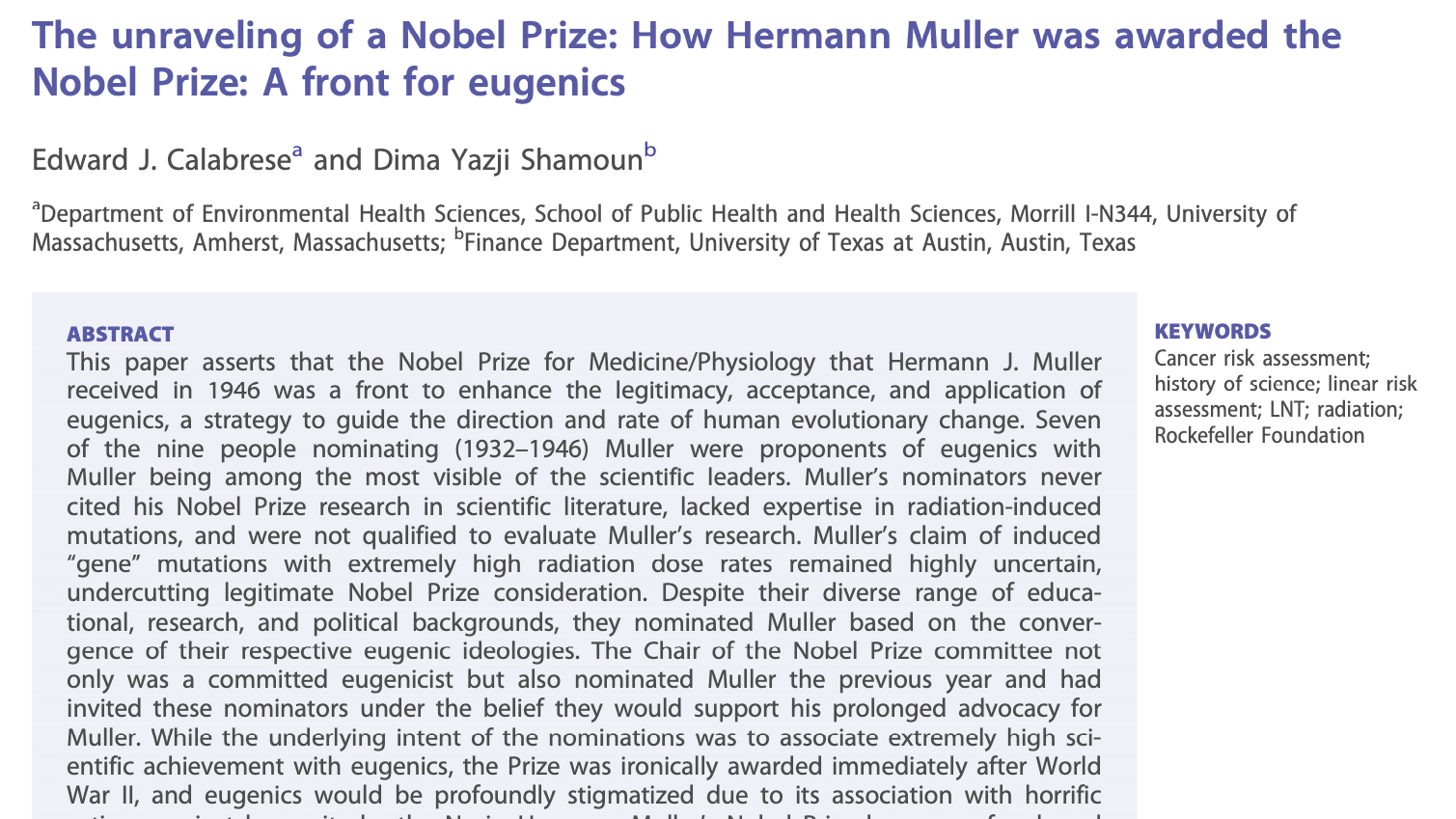Last week Dr. Ed Calabrese released a new paper arguing that Hermann Muller’s 1946 Nobel Prize in Medicine/Physiology was strategically awarded to promote eugenics. Ed’s historical analysis highlights the interplay between science, ideology, and institutional power in shaping public and scientific narratives
After World War II, eugenics became stigmatized due to its association with the Nazis, yet the 1946 prize was still awarded to Muller, as many of his nominators were still eugenics advocates.
Ethical objections aside, the scientific principles of eugenics were eventually discredited, but the celebration of Muller’s work had a lingering effect on regulatory policies and the environmental movement.
If you missed it, Dr. Calabrese was recently a guest on Episode Six of Emily Unleashed and we encourage you to watch the interview. Dr. Calabrese is considered by many to be “Mr. Hormesis,” and asserts that low doses of harmful substances like radiation or chemicals can actually have beneficial effects by stimulating adaptive responses in cells.
In contrast, the linear no-threshold (LNT) model, which traces back to Herman Muller’s work, assumes that even the smallest doses of radiation or carcinogens can cause harm, with no safe level of exposure. The LNT approach has dominated the shaping of public health policies, yet it is based on a flawed understanding of biology and ignores the body’s ability to repair damage from low-dose exposures.
Let's start with the truth!
Support the Broken Science Initiative.
Subscribe today →
recent posts
‘Black box’ safety warning to be removed from hormone therapy for menopause




